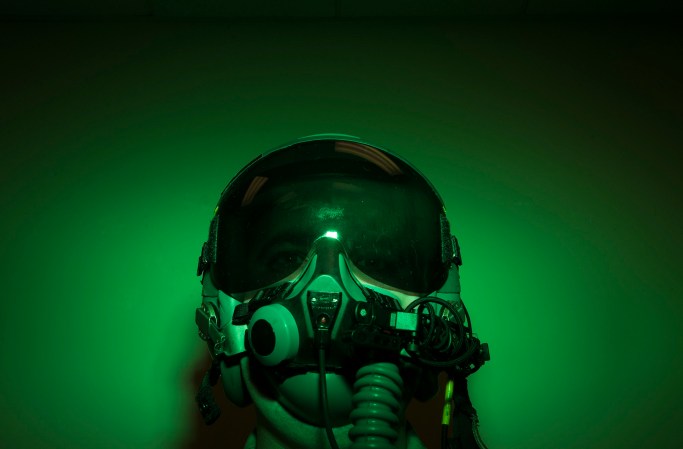

On December 28, the Department of Defense announced the award of an $118 million contract to build a special kind of radar installation in the Republic of Palau. Palau is a nation in the Pacific, about 800 miles southwest of Guam and about 1,000 miles southeast of Manila. It will, by 2026, be host to the Tactical Mobile Over-the-Horizon Radar, a new sensor about which the military is being fairly tight-lipped.
The late December announcement mentions only the concrete foundations that will support the installation. A February 2018 budget document notes that the Tactical Mobile Over-the-Horizon Radar, or TACMOR, “will support air domain awareness and maritime domain awareness requirements over the Western Pacific region. The project will demonstrate a sub-scaled over-the-horizon radar (OTHR) that is one quarter the size of traditional [Over The Horizon] systems.”
The installation, as outlined, will have two sites. One will be along a northern isthmus of Babeldaob, the largest island in Palau. The other will be on Angaur, an island about 60 miles south. These two sites will need to have communications between them, suggesting that the complex could be one linked sensor array. Site schematics show the Babeldaob location as a transmit site, with Angaur as a receiver site.
Department of Defense documents, as well as general US planning and policy, increasingly suggest the western Pacific as a potential future battlefield for the United States. Guam, a territorial possession of the United States since the Spanish American war in 1898, routinely houses bombers that may be tasked with flights to North Korea or China. One of the major challenges of fighting in the Pacific is that the ocean is vast, and in any war that lasts more than a few hours (as a nuclear exchange might), being able to find, track, and attack enemy forces will be a vital component to victory.
That desire to see beyond, in order to better fight, is a driver of over-the-horizon radar.
Beyond line of sight
Radar, while capable of seeing far, is a technology bound by the physics of waves traveling in straight lines. A radio wave sent out needs to hit an object in a direct line from where it emanates to reflect back, and the difference between where it was sent and how it returns makes the signal. This is partly why radar is so useful for tracking planes, which travel above the ground and can thus be detected at further distances, without the curve of the Earth in the way. It is also why radar installations are often mounted high above the ground, as every few feet of height added increases how far it can see.
The Cold War drove early research and deployments of over-the-horizon radars, which were used as a way to try and watch for incoming missile and bomber attacks. So how do they typically work?
One example comes from a Soviet over-the-horizon radar receiver, named Duga, that was built outside of Chernobyl, in Ukraine. Shortwave radio signals sent from transmitter sites in southern Ukraine would bounce off the ionosphere, allowing the signal to travel much further, and would then be detected and interpreted at the Duga site. The Soviet radar signal could be heard on shortwave radios, and radio hobbyists in the United States dubbed it the “woodpecker” for its distinctive pattern.
Another approach to sending radar over the horizon is to use low-frequency signals and send them along the surface, letting diffraction carry the waves further. This surface wave radar has a range of hundreds of kilometers, while techniques bouncing off the ionosphere can perceive the world thousands of kilometers away.
In Ukraine, the distance between the Duga transmitter and receiver sites is over 300 miles. In Palau, the tactical over-the-horizon radar will have a distance between signal and transmitter of roughly one sixth that. If TACMOR is built on similar principles, the shorter distance between sending and receiving might suggest a short range of surveillance. Duga was designed to warn of nuclear launches. The TACMOR site will instead track different threats, on a different scale.
See the sea
TACMOR appears built for a different kind of role than the globe-spanning over-the-horizon radars of the Cold War. Instead of looking for the first sign of nuclear oblivion, TACMOR will track movements related to battle, and will presumably do so at a fraction of the cost of deploying crewed ships and aircraft patrols to scan the same area.
“A modern OTHR [over-the-horizon radar] on Palau will be able to support space-based and terrestrial-based sensor and weapon systems for the potential cueing and early warning of incoming hypersonic weapons, cruise missiles, ballistic missiles, enemy aircraft, and ships,” reports The War Zone. “Most of all, OTHR allows for persistent monitoring of specific areas that would otherwise require many types of radar systems forward deployed over a huge area on the ground, in the air, and at sea at any given time, which may not even be possible.”
By putting the radar system in Palau, the Department of Defense will be able to increase its awareness of a vast swath of sea in the region, and in turn, keep an eye on an important slice of the Pacific. With luck, the radar will report nothing to worry about, but should danger arrive, having the sensor in place means the Navy and Air Force can respond with advance warning, should they need to.















